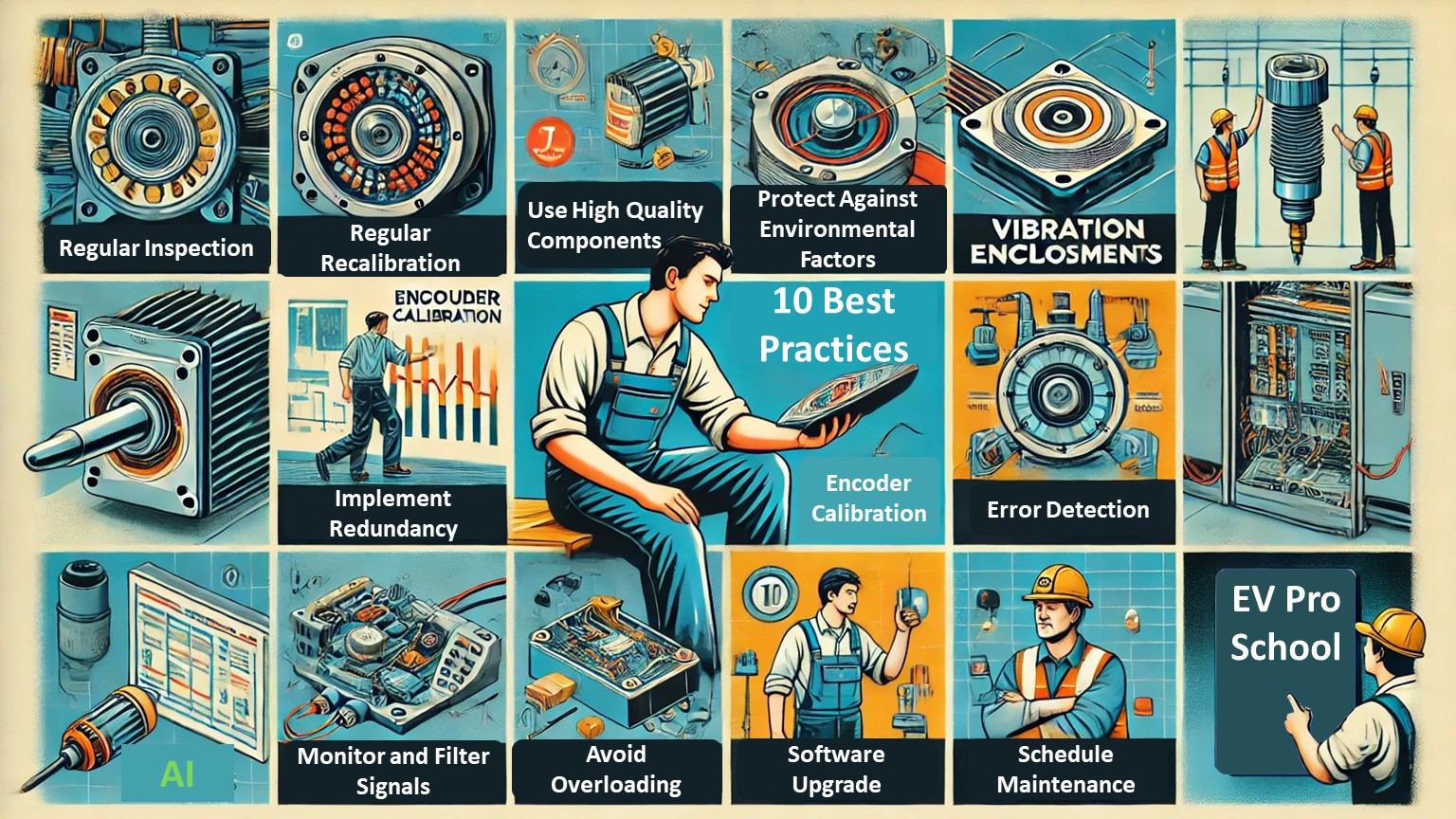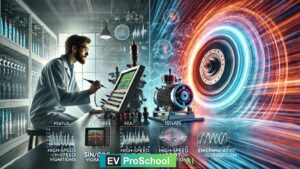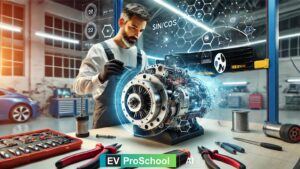Maintaining accurate encoder calibration is crucial for ensuring the long-term performance of Interior Permanent Magnet (IPM) motors, particularly in demanding applications like electric vehicles (EVs). Encoders provide critical position feedback for motor control, and any drift or misalignment can result in degraded efficiency, increased wear, or outright system failure. Here are the best practices to maintain encoder calibration over time:
1. Regular Inspection and Recalibration
Why It Matters
Encoders can experience signal drift due to wear, temperature changes, or environmental factors.
Best Practice
- Routine Maintenance: Schedule periodic inspections to assess signal quality and alignment.
- Recalibration: Use the original calibration procedures to restore the encoder’s accuracy if deviations are detected.
- Data Logging: Keep records of calibration results to track trends and identify recurring issues.
2. Use High-Quality Components
Why It Matters
Durable, high-quality components can reduce the likelihood of errors caused by wear or environmental stress.
Best Practice
- Choose encoders with automotive-grade materials rated for temperature, vibration, and moisture resistance.
- Opt for precision-manufactured targets (e.g., magnetic rings or optical discs) to ensure long-term accuracy.
3. Protect Against Environmental Factors
Why It Matters
Dust, dirt, moisture, and temperature fluctuations can affect encoder performance.
Best Practice
- Sealing and Enclosure: Use encoders with IP-rated enclosures to protect against contaminants.
- Temperature Management: Install thermal insulation or cooling mechanisms to stabilize the operating temperature.
- Humidity Control: Employ moisture-resistant materials or install desiccants in sealed systems.
4. Mitigate Vibrations
Why It Matters
Vibrations from high-speed motor operation can misalign the encoder or damage its components.
Best Practice
- Use vibration-dampening mounts to minimize the transfer of vibrations to the encoder.
- Inspect mechanical connections regularly for loosening due to vibration.
5. Monitor and Filter Signals
Why It Matters
Signal degradation or interference can lead to errors in feedback.
Best Practice
- Real-Time Monitoring: Use oscilloscopes or other diagnostic tools to periodically check signal integrity.
- Noise Filtering: Install EMI shielding and proper grounding to minimize interference from the motor’s high-power operation.
6. Implement Redundancy and Error Detection
Why It Matters
Redundant systems and error detection algorithms can identify calibration issues early, preventing system failure.
Best Practice
- Employ redundant encoders or feedback systems for critical applications.
- Use error-checking algorithms in the motor controller to detect and compensate for discrepancies.
7. Avoid Overloading the Encoder
Why It Matters
Mechanical or electrical overloading can accelerate wear and lead to calibration errors.
Best Practice
- Ensure the encoder operates within its rated speed, torque, and current limits.
- Verify that the encoder and its components are appropriate for the motor’s maximum speed and acceleration.
8. Train Maintenance Personnel
Why It Matters
Improper handling during maintenance or repairs can disrupt calibration.
Best Practice
- Provide detailed training for personnel on encoder installation, alignment, and calibration.
- Document calibration procedures clearly for consistency during maintenance.
9. Upgrade Firmware and Software
Why It Matters
Software algorithms used in motor controllers can enhance encoder performance by compensating for drift or errors.
Best Practice
- Regularly update firmware to incorporate improved signal processing algorithms.
- Use calibration software with advanced error correction features for periodic adjustments.
10. Schedule Preventive Maintenance
Why It Matters
Preventive maintenance helps identify and rectify potential issues before they lead to performance degradation.
Best Practice
- Develop a preventive maintenance schedule tailored to the motor’s operational environment and duty cycle.
- Include inspections, recalibrations, and component replacements as necessary.
Conclusion
Maintaining encoder calibration over time in IPM motors involves a combination of high-quality components, routine monitoring, protective measures, and skilled personnel. By following these best practices, you can ensure the encoder’s long-term reliability, maximizing the motor’s performance and efficiency in EV and other high-demand applications.
Invest in proper maintenance strategies today to avoid costly downtime and ensure optimal operation for years to come.



